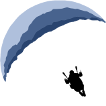[rev_slider_vc alias=”paragin”]

DESTINATION
Indonesia :
The Indonesian archipelago was first inhabited by Pithecanthropus Erectus or java Man, one of the earliest human ancestors that migrated via land bridges to Java at last million years ago. Java man became extinct or mingled with later migration, as the people of Indonesia today or Malay origin closely related to the peoples of Malaysia and Philliphines and are descendants of much later migration from South East Asia that began around 4000 BC.
The Dongson culture, which originated in Vietnam and Southern China about 3000 years ago, spread to Indonesia, bringing with it techniques of irrigated rice growing, ritual buffalo sacrifice, bronze casting, the custom of erecting large monumental stones and some of the peculiar ikat weaving methods found in pockets of Indonesia today. Some of these practices have survived only in isolated areas which were little touched by later arrivals and cultural currents such as the Batak areas of Sumatra, Tana Toraja in Sulawesi, aprts of Kalimantan and several island of Nusa Tenggara.
From the 7th century BC there were well developed and organized societies in the Indoensian archipelago. The inhabitants knew how to irrigate rice field, domesticate animals, use copper and bronze and were noted seafarers. There were villages often permanent ones where life was linked to the produstion of rice, the staple corp. Early Indonesian were animist, believing that all animate and inanimate objects have their own particular semangat (life force or soul).
The spirit of the dead had to be honored because their semangat could still help the living, there was a belief in the afterlife, and the weapons and utensils would be left in tombs for use in the next world. Supernatural forces were held responsible for natural events and evil spirit had to be placated by
offering, rites and ceremonies. Villages developed into embryonic towns and by the 1st century AD, small kingdoms (little more than collection of village subservient to petty chieftains) evolved with their own ethnic and tribal religions. The climate of Java with its hot, even temprature, plentiful rainfall and volcanic soil, was ideal for the wet field method of rice cultivation known as sawah cultivation. The well organized society it required may explain why the people of Java developed a seemingly more sophisticated civilzation than those of other islands. The dry field, or landing method of rice cultivation form of agriculture and requires no elaborate social structure.

